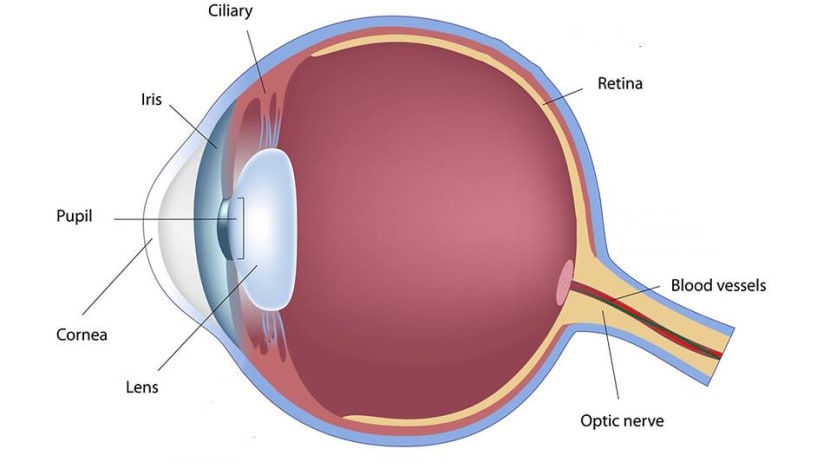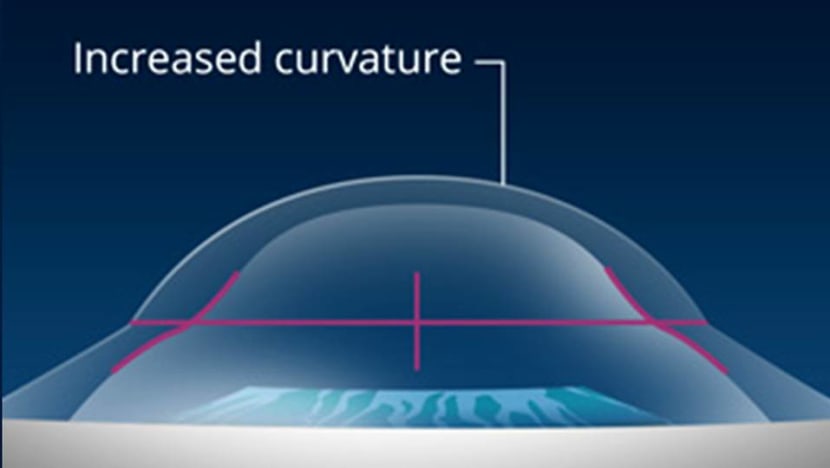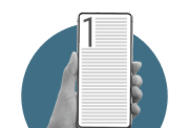Living with 'lao hua': How to deal with presbyopia
The bad news: You can’t prevent or stop it. The good news: There are options beyond just getting reading glasses.

(Art: nonlinear)
It started in a dimly lit restaurant. I opened the menu and the names of the dishes blurred out like ink blots. It was the beginning of my blurry road to presbyopia – or what is commonly called "lao hua yan" in Mandarin.
There are days when I cannot scroll through my Facebook feed on the MRT without holding my smartphone out at arm's length. “There’s nothing you can do to reverse it,” said my optometrist during a recent eye examination, directing her gaze at the incriminating date of birth on my records.
A check with Singapore National Eye Centre (SNEC) confirmed it. "Age is the main cause of presbyopia," said assistant professor Dr Mohamad Rosman. The symptoms – often the inability to see things up close or read fine print – can start in the late 30s for some, or later for others, he added.
What goes on inside your eyeball to help you see is quite a marvel. The tiny ciliary muscle attached to your eye's natural lens contracts and relaxes to help you focus on near and far objects. This muscle is at its most contracted when you need close-up focus, and the most relaxed when you look far – exactly why you are advised to look up from your book or digital device every once in a while to relax your eyes.

But as you age, the ciliary muscles weaken, said Dr Rosman, who is also head and senior consultant of SNEC's Refractive Surgery Department. Ageing also affects the natural lens in your eye. When you are younger, the lens is soft and flexible (like the rest of you), and can be reshaped easily. But as you get older, the lens become more rigid.
As a service to myself and to the other "old flowers" of the world, I set out to find out more about presbyopia and the options available to deal with it. Here is what the experts said – if I read them correctly.
If you've always envied those with good eyesight, here's your chance to gloat. "A person who is long sighted to begin with or have good, unaided distance vision, may experience the effects of presbyopia earlier," said Dr Rosman.
You may also be setting yourself up for early presbyopia by scrolling through your social media feed at every chance you get. "It has been proven that the reading distance is shorter when you are using a digital device than when you are reading a book or paper," said Alex Ong, an optometrist and director of Ong's Optics.
"This can cause fatigue as there is a lot of stress on the ciliary muscles for keeping the lenses focused at a near object. The external muscles are also stressed as they need to keep your eyes in a slightly converged position in order for you to read," said Ong.
DO MYOPIA AND ASTIGMATISM HAVE ANYTHING TO DO WITH PRESBYOPIA?

The answer, again, is no, said Dr Rosman. "But people continue to have the impression that myopia cancels out or prevents presbyopia," he said. "A myopic person may not notice he has developed presbyopia because he can still see near objects once he removes his glasses," said Dr Rosman.
The misconception that short-sightedness improves because of lao hua could sometimes be due to the pseudomyopia that comes with myopia, said Ong.
When the ciliary muscle isn't able to relax properly and becomes locked like a jammed camera focusing ring, it can drive up the pressure in the eyeball and create a blurry vision when you look far, said Ong. This can happen when intensive computer work that keeps your eyes focused on the monitor for hours every day causes the ciliary muscles to spasm.
"But as we age, our ciliary muscles weaken, hence the tension in the lenses is reduced," he said. "Once the tension reduces, the pseudomyopia will go down and therefore, the overall myopia is reduced." This may cause some myopic patients to think that their short-sightedness is starting to wane just as their presbyopia starts to develop.
I HAD LASIK TO TREAT MYOPIA. CAN I TURN TO LASIK AGAIN FOR PRESBYOPIA?

There is a chance you may be able to, said Dr Rosman. But you'll need to check with your eye doctor if you are suitable for repeat Lasik. If you are, monovision may be used to target your presbyopia. "We can correct one eye for distance and leave the other eye for near sight," said Dr Rosman, who said that usually, your dominant eye is stronger for distance vision.
Although that doesn't sound perfect, Dr Rosman explained that when both eyes work in tandem, the result is acceptably clear and comfortable vision for all distances.
But having said that, monovision of any kind – be it monovision LASIK or monovision with contact lenses – involves compromise. Though both eyes continue to work together as a team, distance vision typically is not as crystal-clear as it would be if the non-dominant eye wasn't nearsighted.
I'M NOT ELIGIBLE FOR LASIK. WHAT OTHER SOLUTION IS THERE?
1. Conductive keratoplasty (CK)

It uses controlled heat waves created by radio frequency energy to shrink the cornea's outer rim and steepen its centre. Again, doctors generally create monovision to help you see near and far, and so, only the non-dominant eye is treated.
The upside to CK is that the procedure is minimally invasive, is over in about three minutes per eye, and is done with just topical anaesthesia. However, the effects are temporary and you may need to repeat the procedure after a few months.
2. KAMRA corneal inlay

In photography, a smaller aperture or opening where light enters the camera, increases the depth of field. This allows things in the photo, both near and far, to be in focus. The KAMRA corneal inlay works on the same principle.
To narrow the opening in your eye, a doughnut-shaped piece of plastic that is less than a tenth the thickness of a sheet of paper is implanted into the cornea in front of the pupil. It has a 1.6mm opening in the centre. The inlay is usually implanted into the non-dominant eye in a procedure that takes about 15 minutes and requires no stitches.
3. Multifocal intraocular lenses
If you have cataracts as well as presbyopia, this procedure lets you benefit from both fronts, said Dr Rosman, as it replaces your eye's cloudy natural lens with a man-made one that lets you focus on both near and far objects.
The concept behind multifocal intraocular lenses (IOLs) is based on the principle that the pupil constricts for near tasks, so the central portion of the lens is designed for near, and the outer portion for distance.
NO SURGERY FOR ME, THANK YOU. WHAT OTHER SOLUTIONS ARE THERE?
The simplest option is to wear presbyopic glasses, said Dr Rosman. If you're thinking grandma's bifocal look isn't for you, you can opt for progressive lenses that do not have the tell-tale dividing lines. The downside is, there is peripheral distortion.
For contact lens users, there are options that cover myopia and presbyopia as well as hyperopia (far-sightedness) and presbyopia. Achieving monovision with your contact lenses is one way if your presbyopia isn't severe.
"You can wear a contact lens on one eye to correct your distance vision and a contact lens on your other eye to correct your near vision. The lens for distance vision is usually worn on your dominant eye", Dr Rosman.
If your myopia is within the power range of -10.00 and +3.00 (in layman terms, it means a range from 1,000 degrees in short-sightedness to 300 degrees in long-sightedness) and your presbyopia falls within three Addition (or ADD) powers, you have the option of multifocal contact lenses like Alcon Dailies Total1 Multifocal.
Similar to how the multifocal intraocular lenses work, the centre of the lens allows for near sight, the next optical zone for intermediate sight, and the outermost zone for distance sight.
But contact lenses for correcting astigmatism and presbyopia are not available in the market, according to the SNEC's Department of Optometry.
CAN EXERCISE OR FOOD HELP DELAY OR IMPROVE PRESBYOPIA?
The short answer is no because eye exercises and diet have not been proven to alter your eye's anatomy, according to both Dr Rosman and Ong. However, if you are in your 30s or early 40s, the SNEC's Department of Optometry has these tips that may delay the need for reading glasses:
- Adjust your reading/computer/working distance.
- Enlarge the font size on your electronic devices.
- Ensure sufficient and comfortable lighting when doing near work.
- Take visual breaks by looking at distant objects after every 90 minutes.
- Add a reading element to your distance prescription, such as bifocal or multifocal glasses and/or contact lenses.
- Adjust your prescription for monovision. This means that your dominant eye remains corrected for distance, while your non-dominant eye is corrected to see near objects.
- Take off your glasses to read.















